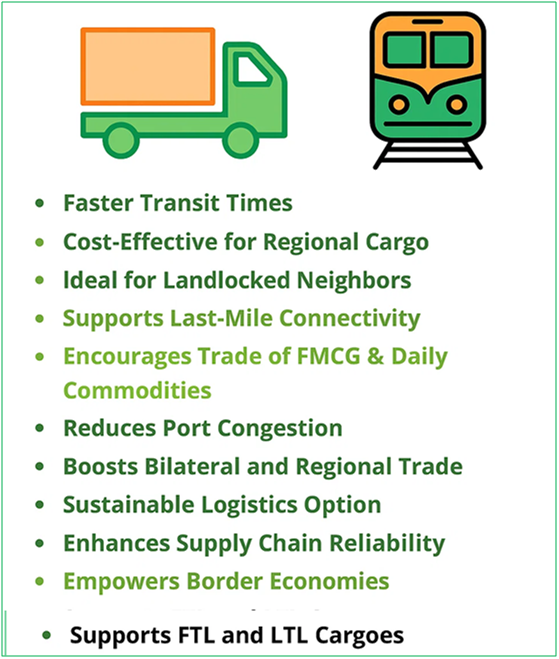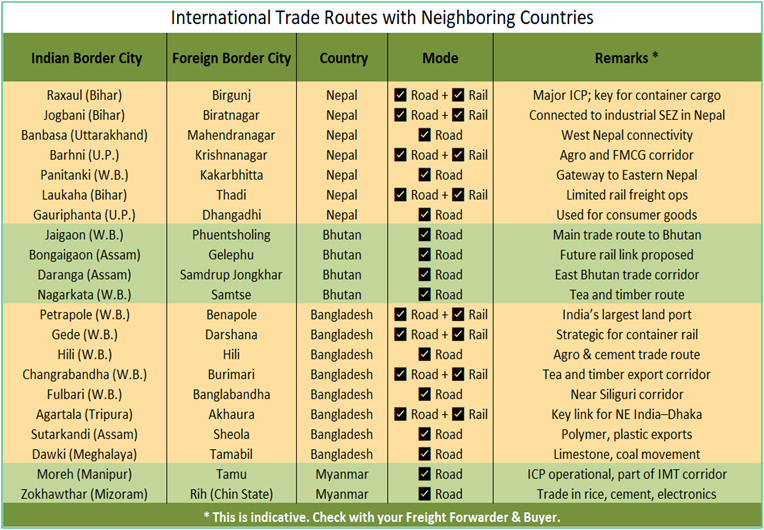Trade from India with Neighboring Countries through Land Routes (Road and Rail)
India shares extensive land borders with several neighboring countries—Nepal, Bhutan, Bangladesh, Myanmar, Pakistan, and China—making cross-border trade through road and rail not only feasible but highly strategic. As a rapidly growing economy and a central player in South Asia, India’s trade connectivity with these neighbors plays a crucial role in promoting regional integration, economic development, and geopolitical stability.
Road and rail-based trade corridors have emerged as effective and reliable alternatives to seaports and air cargo, especially for landlocked countries like Nepal and Bhutan, and for regional value chains involving small and medium enterprises. India’s well-developed logistics infrastructure and ongoing investments in cross-border infrastructure (like integrated check posts, dry ports, and multimodal hubs) are further enabling efficient and secure trade via land routes.

Benefits of Trading with neighboring countries through Road and Rail routes

Active International Rail and Road Routes – India to its Neighboring Countries

Key Trade Corridors
-
India–Nepal: Raxaul–Birgunj rail corridor; Sonauli and Jogbani road routes
-
India–Bangladesh: Petrapole–Benapole road; Gede–Darshana rail link
-
India–Bhutan: Jaigaon–Phuentsholing road; Hasimara–Gelephu rail link (proposed)
-
India–Myanmar: Moreh–Tamu road; Kaladan Multimodal project under development
- India has only 2 Railway routes – one with Bangladesh and the other with Nepal
It is imperative to have a good Freight Forwarder for your land and rail routes.
Confirm with your buyer the Land Customs Station where the buyer can collect the cargo or shipment.

